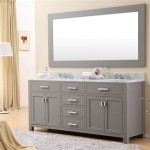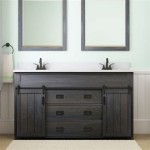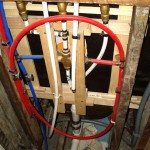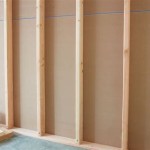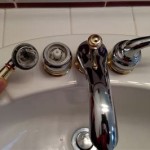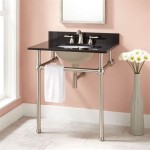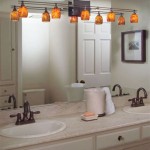How to Resurface Bathroom Tiles: A Comprehensive Guide
If your bathroom tiles are looking worn, outdated, or damaged, resurfacing them can be an effective and budget-friendly solution to restore their aesthetics and functionality. Resurfacing involves applying a new layer of material over the existing tiles, giving them a fresh appearance and improving their durability.
Resurfacing bathroom tiles is a straightforward process that can be completed in a few steps. Here's a comprehensive guide to help you achieve a professional-looking finish:
Materials You'll Need:
- Tile resurfacing kit
- Surface cleaner
- Grout cleaner
- Rags or sponges
- Grout float or squeegee
- Caulk gun (optional)
Step-by-Step Instructions:
1. Prepare the Surface:
Begin by thoroughly cleaning the tiles and grout using the surface cleaner and grout cleaner. Remove any dirt, soap scum, or mildew that may interfere with the adhesion of the resurfacing material.
2. Apply Base Coat:
Apply a thin coat of the resurfacing base coat to the tiles using a roller or brush. Ensure uniform coverage and allow it to dry according to the manufacturer's instructions.
3. Second Coat and Texturing:
Once the base coat is dry, apply a second coat. Before it sets completely, use a sponge or brush to create the desired texture, such as a smooth or matte finish.
4. Grout Refresh:
Clean the grout lines with a grout cleaner, then apply a fresh coat of grout to fill any gaps or cracks. Use a grout float or squeegee to smooth and shape the grout.
5. Sealing (Optional):
For added protection and durability, consider applying a sealant over the resurfaced tiles and grout. This will help repel water and prevent staining.
6. Caulk (Optional):
If necessary, use a caulk gun to apply a thin bead of caulk around the perimeter of the tiles, where they meet walls or fixtures. This will seal any gaps and prevent water damage.
Tips for Resurfacing Bathroom Tiles:
- Choose a resurfacing kit specifically designed for bathroom tiles.
- Follow the manufacturer's instructions carefully to ensure proper application.
- Use a well-ventilated area and wear protective gear when resurfacing.
- Allow ample drying time between coats and avoid using the bathroom until the resurfacing is complete.
- If you encounter any unevenness or defects, sand the resurfaced tiles lightly after drying.
By following these steps and tips, you can successfully resurface bathroom tiles, giving your bathroom a fresh and updated look that will last for years to come.

Reglazing Tile Is The Most Transformative Fix For A Dated Bathroom Architectural Digest

Is Ceramic Tile Refinishing Worth It

Bathtub Ceramic Refinishing Bath Innovations Of Alabama

Ceramic Tile Resurfacing Vs Replacing Which Is The Better

Ceramic Tile Doesn T Have To Be Replaced Miracle Method Can Refinish Over Multiple Surface Including C Refinishing Painting Bathroom Tiles

How To Reglaze A Bathtub And Tile Surround Daly Digs

Before After A Perfectionist S 1 000 Bathroom Overhaul In Brooklyn Remodelista

Tile Resurfacing Buffalo Cabinet Refacing Countertops

How To Make Your Bathtub And Shower Tile Look New Again Life Should Cost Less

Bathtub Ceramic Refinishing Bath Innovations Of Alabama
